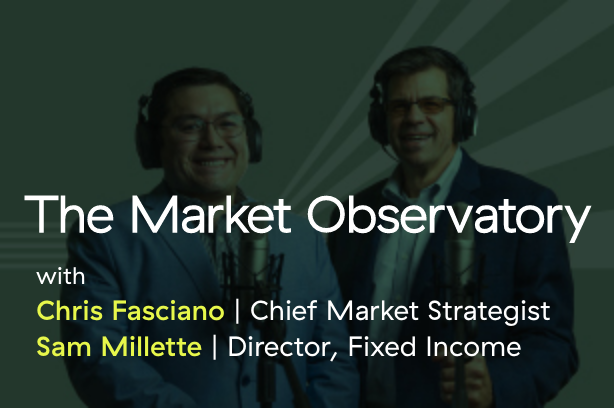This is the last installment in our series on rising interest rates. Here, we’ll cover what everyone really wants to know: What do rising rates mean for our investments?
This is the last installment in our series on rising interest rates. Here, we’ll cover what everyone really wants to know: What do rising rates mean for our investments?
April 15, 2014
Yesterday, we discussed what the natural rate of interest should be, arriving at about 5 percent on a nominal basis, assuming 2-percent inflation. That seems like a reasonable number over time, given that the Federal Reserve has committed to an inflation target of 2 percent. But with interest rates currently at much less than 3 percent, there’s clearly a gap between what the rate should be and where it is now.
April 11, 2014
For some reason, we are experiencing a new wave of doom and gloom. In the past week, I’ve been forwarded several e-mails rehashing end-of-the-world stories, including an invitation to watch a video entitled Meltdown America. When I was interviewed on TV yesterday, the clear theme of the questions was whether this was it, the big crash.
April 10, 2014
Summer is coming, finally, and we have a nice day outside. Of course, summer means amusement parks and, as Jackson gets older, Dad taking him on rides. I miss the days of the rocket ships that went in gentle circles—now we are moving on to the teacups and the roller coasters that make you regret that hot dog you ate very much.
April 9, 2014
I’m back in the office today with no overarching story, but a lot of items worth a look.
Friday was a scary day in the markets, as pretty good economic news was met with a downturn in stock prices. The S&P 500 dropped 1.25 percent, and the Nasdaq dropped a scarier 2.6 percent.
April 4, 2014
The data is coming in, and it appears it was the weather after all. The jobs report showed a gain of 192,000 (slightly below expectations but still quite healthy), the unemployment rate remained steady at 6.7 percent (which is actually better than it looks), and private employment hit a new all-time high—all very good signs for the future.
April 3, 2014
I’m at the Commonwealth Winners Circle conference this week, talking with our financial advisors and having a wonderful time. The Arizona weather is a huge improvement on that of many parts of the country, which is lightening everyone’s mood. Even as we enjoy the better weather, though, one of the questions that keeps coming up is whether the current positive trends in many areas will continue, or change, and how will we know? Is the better economic weather transitory, or is spring really on its way?
April 1, 2014
The New York Times has an excerpt from Michael Lewis’s new book, Flash Boys, which is essentially about how the stock markets have become rigged. There will be a tremendous amount of debate on whether his charges are fair, what actions should be taken, and so forth—the FBI has apparently already launched an investigation—but to my mind, this somewhat misses the point.
March 28, 2014
At Commonwealth, we evaluate managers of all sorts on many criteria, statistical and qualitative. We never know, really, whether the analysis will work—which is why we constantly review and manage our recommended list—but we know, from experience, most of what to look for in most types of funds.

Episode 11
September 10, 2025
Episode 10
August 13, 2025
Episode 9
July 23, 2025
Episode 8
June 18, 2025
Episode 7
May 14, 2025
The information on this website is intended for informational/educational purposes only and should not be construed as investment advice, a solicitation, or a recommendation to buy or sell any security or investment product. Please contact your financial professional for more information specific to your situation.
Certain sections of this commentary contain forward-looking statements that are based on our reasonable expectations, estimates, projections, and assumptions. Forward-looking statements are not guarantees of future performance and involve certain risks and uncertainties, which are difficult to predict. Past performance is not indicative of future results. Diversification does not assure a profit or protect against loss in declining markets.
The S&P 500 Index is a broad-based measurement of changes in stock market conditions based on the average performance of 500 widely held common stocks. All indices are unmanaged and investors cannot invest directly in an index.
The MSCI EAFE (Europe, Australia, Far East) Index is a free float‐adjusted market capitalization index that is designed to measure the equity market performance of developed markets, excluding the U.S. and Canada. The MSCI EAFE Index consists of 21 developed market country indices.
One basis point (bp) is equal to 1/100th of 1 percent, or 0.01 percent.
The VIX (CBOE Volatility Index) measures the market’s expectation of 30-day volatility across a wide range of S&P 500 options.
The forward price-to-earnings (P/E) ratio divides the current share price of the index by its estimated future earnings.
Third-party links are provided to you as a courtesy. We make no representation as to the completeness or accuracy of information provided on these websites. Information on such sites, including third-party links contained within, should not be construed as an endorsement or adoption by Commonwealth of any kind. You should consult with a financial advisor regarding your specific situation.
Member FINRA, SIPC
Please review our Terms of Use.
Commonwealth Financial Network®